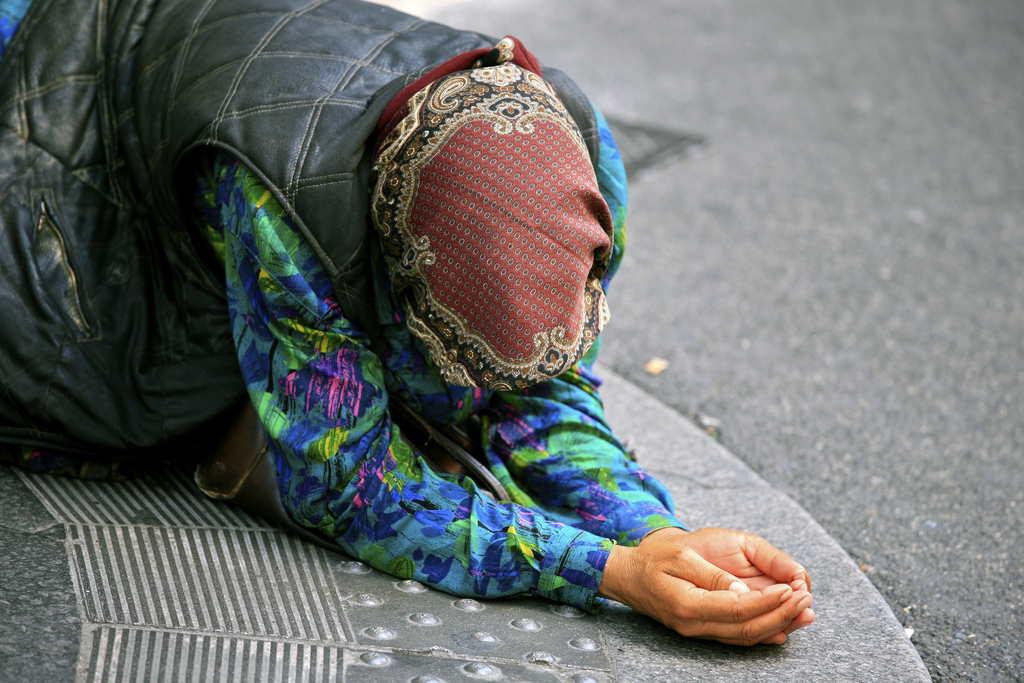One of the most prevalent questions floating between political analysts, political scientists, students, and everyday educated American citizens concerns the state of post-embargo Cuba. What aspects of Cuban society will change or even disappear, and what aspects will resist outside influence? Over the past five decades, Cuba has developed multiple unique systems against the grain of global norms to adapt to its wayward isolation. Arguably the most successful of these unique systems would be the development of Organoponicos, a collectivization of food production into a series of poly-produce urban gardens. Organoponicos are commonly maintained on rooftops or alleyways within low-level concrete walls, grown in an entirely organic manner without petroleum-based fertilizers, and relying on irrigation from city plumbing. They are designed to produce fruits and vegetables for the immediate community to prevent food shortages, like those around the country that were common during the post-Cold War era. The system in itself is in no way a fully self-sufficient one, surviving solely based on heavy subsidies from the Cuban government, but it serves as a necessary case study for developing sustainable agriculture methods around the world — most prominently in a system where petroleum resources are depleting rapidly.
From 1959 onward, Cuba’s industrial agriculture sector depended on the Soviet Union; the Soviet satellite received deep subsidies for heavy machinery, pesticides, and petroleum-based fertilizers in exchange for produce to states within Comecon (the Eastern Bloc’s multilateral economic union). The Cuban economy was extremely vulnerable without these subsidies, which allowed sugar to be purchased at nearly three times the price per pound. At one point, these subsidies even accounted for 40% of Cuban trade during the peak years of the Cold War.[1] While buying sugar at a price much higher than the market value, Comecon states also sold machinery and petroleum for fertilizers to Cuba at rates lower than the market price of these products, creating an agro-industrial sector entirely reliant on subsidized imports from within the Eastern Bloc.
As the Cold War continued, Cuba experienced increasingly dire economic conditions. Its special relationship with Eastern Europe ended abruptly with the fall of the Soviet Union in 1991, along with the gradual dissolution of the Warsaw Pact — and with it the dissolution of Comecon. This ushered in the era of economic downturn colloquially known as “The Special Period,” during which resources in petroleum and heavy machinery shrunk dramatically in volume, and billions of dollars in agricultural subsidies disappeared overnight.[2] Because of Cuban’s heavy reliance on subsidized industrial farms that operated with petroleum and heavy machinery, its agricultural system collapsed during “The Special Period.” Food shortages became a severe issue in Cuba, and the average caloric intake fell by nearly one-third, plummeting from 2900 calories for the average citizen in 1989 to 1800 calories in 1995.[3] A restructure in food production systems became crucial, especially since Fidel Castro’s hostility to the U.S. did not help facilitate regional imports.
Even though necessity serves as the catalyst for invention, it doesn’t create the resources required to turn ideas into a reality. Cuba had the intellectual resources required for an overhaul of agricultural infrastructure, boasting 11% of the scientists in Latin America within a mere 2% of the total population of the region.[4] What the country was obviously lacking were physical resources — specifically those of heavy machinery, petroleum, and pesticides. Cuba needed to devise a system that increased production at a sustainable rate without most of the modern luxuries of farming.
Enter Organoponicos – the Cuban response to the food shortages of “The Special Period.” Organoponicos are a system of urban gardens that produce completely organic produce. They often consist of small and diversely-grown enclosures with organic matter and soil. These urban gardens are a labor-intensive form of farming, because they are tended to daily by community members or state employees. Starting in 1994, Cuba began to prioritize food production with an acute focus on small farmers. This focus caused a movement to reclaim unused land for purposes of agriculture such as abandoned lots, rooftops, or even alleyways.[5] Most usable and unclaimed land in urban areas was converted to these poly-produce organic gardens while more efficient farming techniques used on small farms gradually made small-scale production profitable. The fruits and vegetables produced by Organoponicos are completely organic, without the presence of GMOs, petroleum-based fertilizers, pesticides, or any other chemicals. The organic nature of these urban gardens has even spread to the non-urban agricultural sector. As large-scale farms adapted to the environment after the collapse of Comecon, they found themselves converting to a completely organic and labor-intensive system.[6]
The results of Organoponicos are successful to an extent. Cuban reliance on agricultural imports has fallen to 16% from the peak of 53% during “The Special Period,” and most of their food imports do not thrive in the tropical climate of the state and therefore could not be produced locally, like cereal grains or livestock.[7] Food deserts, urban environments where residents do not have physical access to fresh produce, have been given a nearby and constant source of fresh produce. For example, Havana is capable of producing 90% of its daily produce consumption through urban gardens [8]. Success is also apparent in the survivability of the agricultural system. Previously, the frequent high-intensity tropical storms that would sweep through the Caribbean would damage the output of industrial farms. After Hurricane Ike hit the island of Cuba in 2008, research showed that poly-produce organic farms took smaller hits in production and recovered faster than their monocultured counterparts. The diversification of produce and introduction of urban gardens made Cuban agriculture less vulnerable to the extreme weather that would annually pass through the region.[9]
Should this system be replicated around the world? It is, without a doubt, an impressive system – healthy and organic, environmentally responsible, potentially less vulnerable to extreme climate events.[10] Despite the system’s positives, its labor-intensive nature is very difficult to maintain; the system only provided 4% of the country’s GDP while employing nearly one-fifth of the working population.[11] Additionally, they fail to turn much of a profit on their own, working great as a system to supplement Cuba’s ability to provide for itself, yet falling short when it comes to exports and the ability to make a profit in the agricultural sector. During multiple years since 1997, most farms, both urban and rural organic enclosures, would not have been able to make a profit off of their produce without the help of heavy government subsidies, even after the land was turned from state-run farms into privatized enclosures. The fact that one-fifth of a country’s population is employed in a sector that does not have a positive impact on Cuba’s position as a global economic player is a major detriment to the development of the state from a forced survivor into a presence in the global economy.[12]
However, trends in the supply of petroleum suggest that innovations like Organoponicos may be necessary for other states to implement. The term “Peak Oil Crisis” describes a scenario where the world’s demand for petroleum increases while levels of non-renewable resources decline.[13] Debate currently focuses on when Peak Oil Crisis will occur – with new advances in petroleum extraction technologies that provide access to additional reserves. However, it is clear that oil production levels will eventually decrease to a level where it can not meet the world’s demand and cause global shortages.
Organoponicos serve as an excellent isolated case study for how a state could adapt to an economy with insufficient access to fossil fuels. Cuba experienced a very sudden decline in access to petroleum products and rapidly transformed their system into a relatively stable one. If other countries adapted to Cuba’s agro-ecological system by introducing urban gardening systems and organic methods in rural farms, the dramatic impact of Peak Oil Crisis could be mitigated and the impacts of oil shortages could be lessened. However, the primary downfall of the Cuban system is the labor requirements to maintain organic farms in rural areas. This issue stems from Cuba’s lack of heavy machinery after the collapse of Comecon. Some sustainable farming activists maintain that countries currently have the ability to produce green farm machinery that can render the massive use of labor unnecessary.[14] Other countries could consider adapting Cuba’s Organoponicos system to a higher-functioning economy.
The example set by the Cuban state is rarely one that should be used as political precedent in states around the world. But through a bizarre set of circumstances facilitated by the collapse of Comecon, Cuba experienced a “mock Peak Oil Crisis” decades before it was predicted to hit the rest of the world. The purpose of looking at the Organoponicos system is to satisfy the need for a case study involving response to diminishing petro-chemical supplies. Cuba experienced the rapid onset of economic hardships with a reduction in the supply of subsidized petroleum to a trickle over the period of a few years. With proper recognition by states that this decline in petroleum supplies will occur, the world could adequately transition towards a new system for agricultural production that is able to sustain itself despite the diminishing supply of fossil fuels — using the successes and failures of the Organoponicos system in Cuba as a precedent.
References:
[1] Gonzalelz-Corzo, M. (2003). Transition or Survival? An Analysis of Cuba’s Post-Soviet Economic Reforms. Rutgers Graduate School – Newark. Retrieved from http://dga.rutgers.edu/wp-content/uploads/2012/10/Gonzalez.pdf
[2] The Castros, Cuba and America; On the road towards capitalism. (2012, March 24). The Economist.
[3] Mark, J. (n.d.). Growing it Alone; Urban Organic Agriculture on the Island of Cuba. Earth Island Journal.
[4] Altieri, M., & Funes-Monzote, F. (2012, January 1). The Paradox of Cuban Agriculture.Monthly Review
[5] Friedman-Rudovsky, N. (n.d.). Urban Agriculture in Cuba (Photo Essay). Retrieved March 1, 2015, from https://nacla.org/news/2012/10/18/urban-agriculture-cuba-photo-essay
[6] The Power of Community: How Cuba Survived Peak Oil [Motion picture]. (2006). The Community Solution.
[7] Altieri, M., & Funes-Monzote, F. (2012, January 1). The Paradox of Cuban Agriculture.Monthly Review
[8] Hunt, N. (2008, January 1). Agriculture in Cuba Today. Retrieved January 1, 2015, from http://www.cubaagriculture.com/agriculture-today.htm
[9] Altieri, M., & Funes-Monzote, F. (2012, January 1). The Paradox of Cuban Agriculture.Monthly Review
[10] The Impact of Climate Change on Natural Disasters. (n.d.). Retrieved March 1, 2015, from http://earthobservatory.nasa.gov/Features/RisingCost/rising_cost5.php
[11] Economy Agriculture, Fishing, and Forestry. (n.d.). Retrieved April 12, 2015, from http://kids.britannica.com/comptons/article-229038/Cuba
[12] Zepeda, L. (2003, September 1). Cuban Agriculture: A Green and Red Revolution. Choices.
[13] Miller, R., & Sorrell, S. (2013, December 2). The future of oil supply. Retrieved March 1, 2015, from http://rsta.royalsocietypublishing.org/content/372/2006/20130179
[14] Kezber, M. (2013, March 13). How the Farm Machinery is Getting Greener. Retrieved March 1, 2015, from http://changing-planet.org/2013/03/13/how-the-farm-machinery-is-getting-greener/


